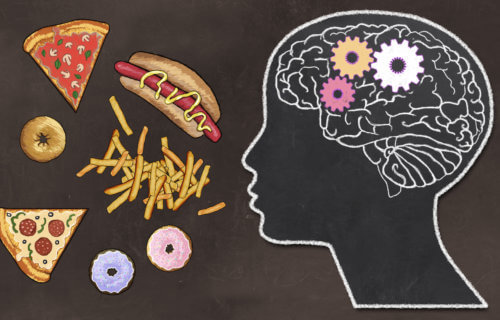SAN DIEGO — Intermittent fasting has peaked in popularity lately as a trendy weight loss strategy, but surprising new research suggests a time-restricted eating schedule may also promote a stronger memory and lead to less accumulation of amyloid proteins in the brain — a key factor in the development of Alzheimer’s disease.
Alzheimer’s disease causes a number of awful symptoms like loss of memory and personality changes, but the most common form of dementia is also known to wreak havoc on the body’s circadian rhythm. Our circadian rhythm is the internal biological clock in charge of regulating many of our physiological processes. Close to 80 percent of Alzheimer’s patients report body clock-related issues, such as trouble sleeping or worsening cognitive function at night. Unfortunately, today there are no available treatments for Alzheimer’s that target this specific aspect of the disease.
Now, researchers from the University of California San Diego School of Medicine have confirmed in mice that it is indeed possible to correct circadian disruptions connected to Alzheimer’s disease with time-restricted feeding, a variety of intermittent fasting that prioritizes limiting one’s daily eating window without limiting the amount of food consumed.
In the study, a group of mice fed on a time-restricted schedule showed improvements in memory and reduced accumulation of amyloid proteins in their brains. Next, study authors say their work will likely spark a human clinical trial.
“For many years, we assumed that the circadian disruptions seen in people with Alzheimer’s are a result of neurodegeneration, but we’re now learning it may be the other way around — circadian disruption may be one of the main drivers of Alzheimer’s pathology,” says senior study author Paula Desplats, PhD, professor in the Department of Neurosciences at UC San Diego School of Medicine, in a university release. “This makes circadian disruptions a promising target for new Alzheimer’s treatments, and our findings provide the proof-of-concept for an easy and accessible way to correct these disruptions.”

Alzheimer’s disease affects more than six million Americans, according to estimates. Many health experts, doctors, and scientists consider it the biggest health challenge in the United States heading into the future. People with Alzheimer’s deal with a variety of disruptions to their circadian rhythms, examples include changes to their sleep/wake cycle, increased cognitive impairment, confusion in the evenings, and difficulty falling and staying asleep.
“Circadian disruptions in Alzheimer’s are the leading cause of nursing home placement,” Prof. Desplats explains. “Anything we can do to help patients restore their circadian rhythm will make a huge difference in how we manage Alzheimer’s in the clinic and how caregivers help patients manage the disease at home.”
Boosting the circadian clock has become an emerging approach to improving health outcomes in recent years, and one way to accomplish this is by controlling the daily cycle of feeding and fasting. Researchers tested this strategy using a mouse model of Alzheimer’s disease. They fed the mice on a time-restricted schedule where they were only allowed to eat within a six-hour window daily. For humans, this would equal out to about 14 hours of fasting each day.
In comparison to the control who were given food at all hours, mice fed on the time-restricted schedule showed stronger memories, were less hyperactive at night, followed a more regular sleep schedule, and showed fewer sleep disruptions. These mice also performed better on a series of cognitive tests in comparison to control mice, thus demonstrating that a time-restricted feeding schedule was indeed able to help mitigate the behavioral symptoms timed to Alzheimer’s disease.
Study authors noted improvements in the mice on a molecular level. Among rodents fed on a restricted schedule, multiple genes associated with Alzheimer’s and neuroinflammation were expressed differently. The feeding schedule also appeared to help promote the reduction of amyloid proteins accumulating in the brain. Amyloid plaques are one of the hallmarks of Alzheimer’s.
Since the time-restricted feeding schedule appears able to substantially change the course of Alzheimer’s in the mice, researchers are optimistic that their findings will be easily translatable to the clinic. Another benefit is that the new treatment approach relies on a lifestyle change as opposed to a drug.
“Time-restricted feeding is a strategy that people can easily and immediately integrate into their lives,” Prof. Desplats concludes. “If we can reproduce our results in humans, this approach could be a simple way to dramatically improve the lives of people living with Alzheimer’s and those who care for them.”
The study is published in the journal Cell Metabolism.
You might also be interested in:
- How green tea, red wine compounds fight off toxic plaques in brain linked to Alzheimer’s
- Intermittent fasting may be the key to preventing Type 2 diabetes
- Intermittent fasting alters expression of genes tied to health and longevity

